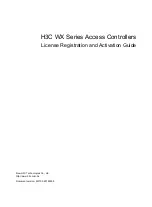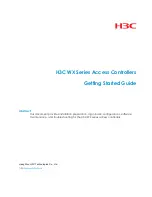
Reset Control
86
SPRUH22I – April 2012 – Revised November 2019
Copyright © 2012–2019, Texas Instruments Incorporated
System Control and Interrupts
1.3.1.6
Master Software Reset and Master Debugger Reset
The master software reset is a software-generated reset output by the NVIC (using
SYSRESETREQ/VECTRESET of the Cortex-M3 NVIC Application Interrupt and Reset Control Register).
The master debugger reset is a debugger-generated reset that is also an output of the NVIC.
In addition to resetting the master subsystem, these two resets can propagate to the control subsystem.
Note that while debugging or developing code when the debug probe is connected to the device, it has to
be in RUN state for the control subsystem to see the software reset and/or debugger reset from the
master subsystem. If the control subsystem is in DEBUG HALT mode, it will not see this reset input.
As shown in
, this reset does not pull the XRS signal low, but if both the cores are reset, when
coming out of reset, each core will start executing its own boot ROM. On the master subsystem, bit 4 of
the MRESC register will be set to inform the application software that the device was reset by software.
1.3.1.7
Control Subsystem Software Reset (from Master)
The control subsystem can be reset by software running on the master subsystem by writing to the
M3RSnIN bit (bit 16) of the CRESCNF register. When the control subsystem is reset by the master
subsystem by writing to the CRESCNF register, all the GPIOs which were previously owned by the control
subsystem CPU will still be owned by the control subsystem CPU, and all the GPIOs will be configured as
inputs.
The control subsystem will start executing C-Boot ROM when out of reset.
1.3.1.8
Control Subsystem Debugger Reset
This reset is driven by the debugger only to the control subsystem. As shown in
, a control
system debugger reset, resets the C28x CPU core and control subsystem. All the GPIOs which were
configured for the control subsystem will remain with the control subsystem and will be reset to their
default state (input, GPIO mode). Please refer to
GPIO
chapter of this document for more details on the
reset state of the control subsystem GPIOs.
The control subsystem will start executing C-Boot ROM when out of reset.
1.3.1.9
Control Subsystem NMIWD Reset
This device has no general-purpose watchdog timer associated with the control subsystem but there is an
NMI watchdog timer associated with the control subsystem's NMI logic. This timer will start counting as
soon as an enabled non-maskable interrupt is triggered to the control subsystem CPU. It will reset the
subsystem if the triggered NMI is not acknowledged, by clearing the respective bits in CNMIFLG register.
All of the GPIOs configured for the control subsystem will still be owned by the control subsystem and put
to their default reset state after a control subsystem NMIWD reset. The CNMIWDRST bit (bit 16) of the
CRESSTS register will be set for the master subsystem to know when the control subsystem is reset by
the CNMIWD timer. Also, an NMI is triggered to the master subsystem indicating that the control
subsystem was reset by the NMIWD.
Note that the master subsystem is not reset when the control subsystem is reset by the CNMIWD, but if
the master subsystem is reset by a MNMIWD it will also reset the control subsystem. Refer to the CNMI
and MNMI sections for more details on NMI logic.
1.3.1.10 ACIB Reset
The analog common interface bus reset resets the analog subsystem and analog common interface bus
(ACIB). This reset signal can only be generated by software running on the master subsystem by setting
the ACIBRST bit in the CRESCNF register.
This reset puts all the analog subsystem GPIOs in input mode. The master subsystem and the control
subsystem are not reset by this signal, and the control subsystem can learn about the status of this signal
by looking at the ACIBRESET bit (bit 30) of the DEVICECNF register. Refer to the DEVICECNF register
for details.
















































